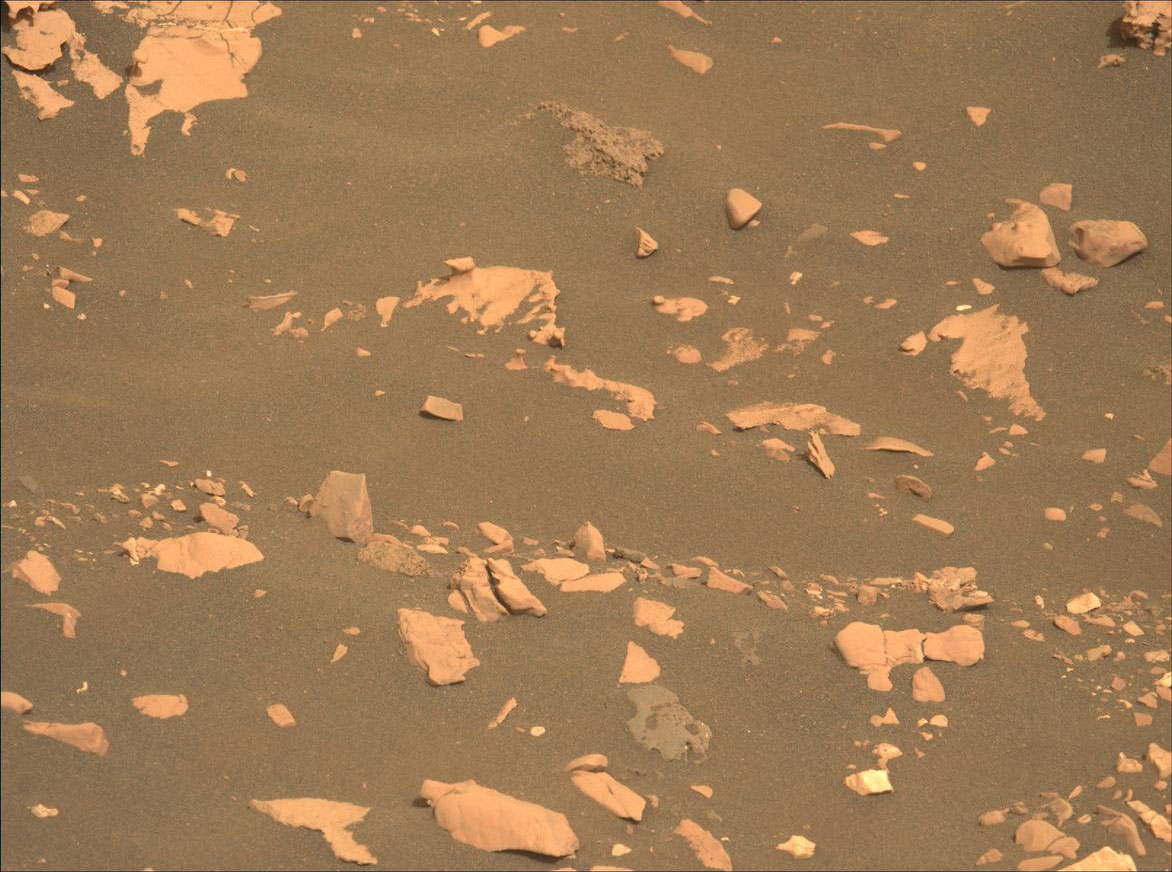2 min read

Back in 2022, Perseverance found my favourite rock on the mission so far: a flat piece with a mushroom-shaped rock feature sticking out of it! The “mushroom” is about 1-2 cm tall and less than 1 cm wide. The rock was in an area the rover explored called Hogwallow Flats. Many aspects of Hogwallow Flats set it apart from the rest of the rocks in Jezero: it was very fine-grained compared to other units, it contained a higher proportion of sulfate salts, and it had interesting rock features like the “mushroom” within it.
The “mushroom” is actually a geologic feature known as a concretion. Concretions are solid masses within a rock that form as water flows through sediment, dissolving minerals and reprecipitating them in a more compacted configuration. Concretions are usually harder than the surrounding rock, making them less vulnerable to erosion and weathering. On Earth, concretions come in a wide variety of shapes (spherical to irregular) and sizes (1 mm to 2.2 meters) and they first appear in the terrestrial rock record over 3 billion years ago. We do not know when the “mushroom” concretion at Hogwallow Flats was first formed but as wind carved out the surface of Mars over billions of years, it eroded the softer bedrock around this hard concretion. Now all that’s left of the surrounding bedrock is a very thin rock spire connecting the concretion to the flat rock below, like a miniature version of the giant hoodoo features of the American southwest. Near this interesting feature, we also saw big, disc-shaped concretions, small, spherical concretions, and pointy concretions! It was an exciting summer, full of a variety of concretion shapes. The rover cored a sample from Hogwallow Flats called ‘Bearwallow’ that may contain a concretion so if the samples are returned to Earth, we will be able to learn even more about martian concretions and how they were formed! Another interestingly wind carved martian rock is this ‘spoon’ shaped rock captured by Curiosity rover in 2015.
Written by Hemani Kalucha, Ph.D. Student at Caltech







